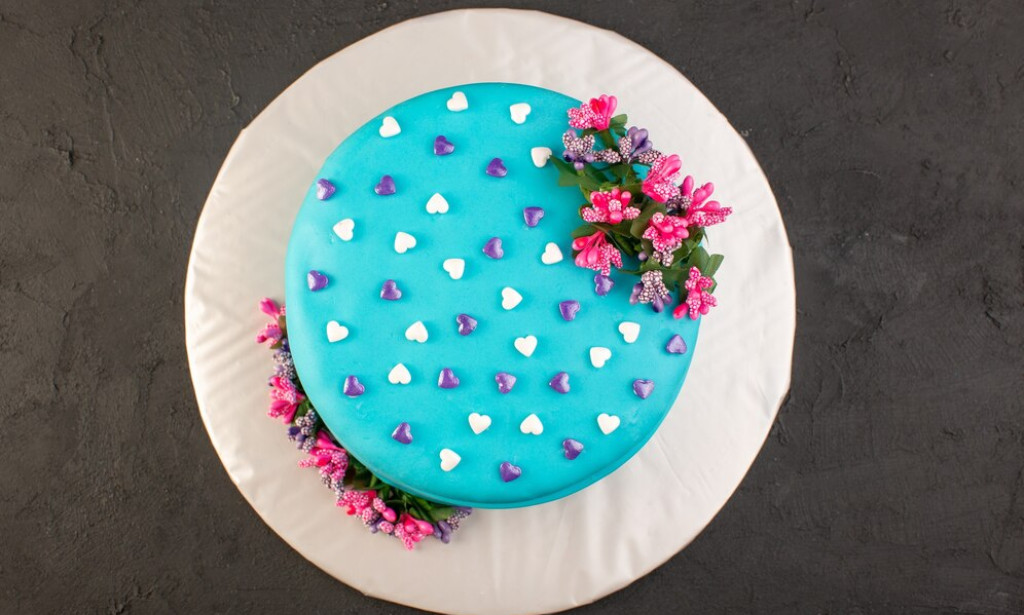Baking is a practice that is half science and half art; and how can one enhance the baked meals other than using edible flowers? These natural additions not only serve as decorations for baked products but also bring novelties to taste and aroma. The use of flowers in baking has been common for years and hence turns normal cakes into delicious floral creations. From simple at-home baking to gifting a special someone with flower-embedded goodies, there are plenty of cake and flower delivery services available out there these days.
Why Bake with Flowers?
Flower elements enhance both the visual attractiveness and taste experience of baked products. Desserts with their multiple colours catch people's visual attention, whereas their unique flavour combinations provide distinctive taste experiences. Through their floral essence along with their zesty flavour profiles, edible blossoms will elevate any baked dessert into a gastronomic delight. The combination of antioxidants with vitamins and natural fragrances creates foods which are nutritious while being visually attractive.
Best Edible Flowers for Baking
Not all flowers are safe for consumption or tasty and hence, it is crucial to find suitable species for human consumption. The following is a list of some of the most common flowers used in baking:
Lavender
The delightful aroma of lavender creates both floral and slightly sweet tastes that are excellent for desserts like cookies and, specifically, cakes.
Rose
Rose petals have a floral fragrance that people like which can be used to decorate buttercream along with macarons and tarts.
Violets
This aromatic plant offers a pleasant, sweet taste alongside grassy notes that make it perfect for use as a decorative element on cakes and cupcakes.
Chamomile
The distinctive tender and honey-flavoured nature of chamomile makes it perfect for enhancing both tea cakes and muffins.
Pansies
These flowers are very tender and have a slightly sweet, delicate flavour, making them ideal for use in cookies and frosting.
Marigold
Also known as “poor man’s saffron,” marigolds are of peppery taste that has a slight tang and is ideal for savoury bread and biscuits.
How to Use Flowers in Baking
The type and preparation of the flowers that are put into the baked products depend on the type of texture that is required and the flavour of the flowers.
Infusing Flavors
Among various flower-baking applications, the simplest approach involves adding floral scents to butter, sugar or milk before use. Food experts recommend a soaking approach where lavender buds get immersed in warm milk before their addition to the cake batter. Floral-flavoured syrups serve as an alternative method for adding fragrance to sponge cakes by applying them to their surface.
Flower Petal Mix-ins
For a stronger floral fragrance, edible flowers can be placed and mixed raw into the batters and doughs. Even if one bakes sugar cookies, one should add finely chopped rose or violet petals to decorate them or add colour to scones.
Floral Garnishes
Incorporating flowers whole on the surface of cakes, cookies, and tarts proves to maintain the flowers’ aesthetic while adding artistic value to the final culinary products. Thus, pansies and violas are ideal for this purpose since they do not fade or wilt and shrink like other flowers when exposed to heat.
Crystallized Flowers
As you may already know, candied flowers are an addition that can be placed on baked goods to enhance their appearance. This is a rather simple technique that is done by brushing the petal with some raw egg white and then dusting it with superfine sugar and letting it dry. It is a powdery substance with a snow-like texture and adds elegance to cakes and cupcakes.
Floral Extracts and Powders
Liquids such as rose water or orange blossom water can be used in cake batter or frosting and added to fruit jams and glazes. Also, the petals of flowers can be dried and later pounded and incorporated in the preparation of flour to enhance flavour.
Tips for Baking with Edible Flowers
Ensure the flowers are food-safe
It also advises against using flowers that have been sprayed with pesticides or any other chemicals. It is recommended to buy them from producers of organic gardens or specialized grocery stores.
Fresh or dried flowers must be used properly
The best way to add flowers is to use or eat fresh flowers for aesthetic purposes since they have a beautiful appearance, and dried flowers for taste since they are more flavorful.
Taste test before adding
Some flowers have very strongly developed tastes so moderation can be the key here and trying it in small quantities.
Store properly
Fresh flowers should be put in a vase and can be kept in the refrigerator wrapped in damp paper for some time, while for dried petals, it is advisable to pack them in an airtight container and should not be exposed to light. If you are in a hurry and need fresh flowers for your baking, extending your order to same-day flower delivery guarantees delivery of fresh edible flowers to you.
Conclusion
Edible flowers serve dual purposes because they help decorate food, contribute flavour notes to your baking creations and establish a distinctive artistic element. The experience of a professional pastry chef or an advanced home baker who pursues innovative recipes will find floral ingredients to be an exciting exploration. It is, therefore, possible if the right flowers are chosen and are used in conjunction with appropriate ingredients and techniques used in coming up with the confectionaries. Therefore, let the floral wonders do the talking and bring the essence of the natural world to your baked creations!

You must be logged in to post a comment.